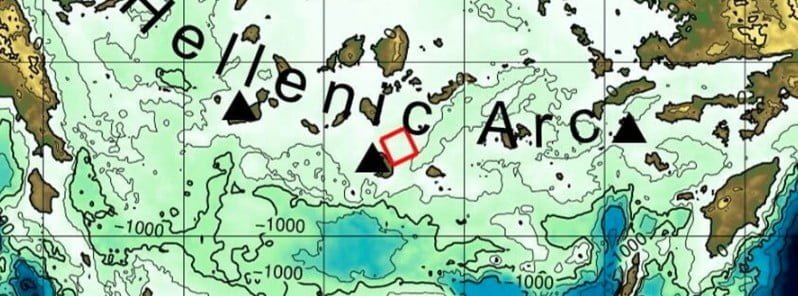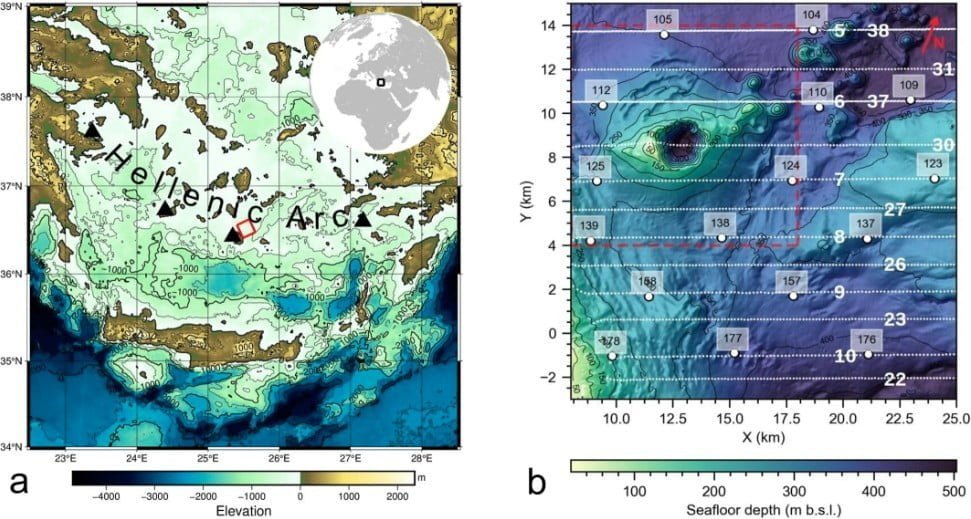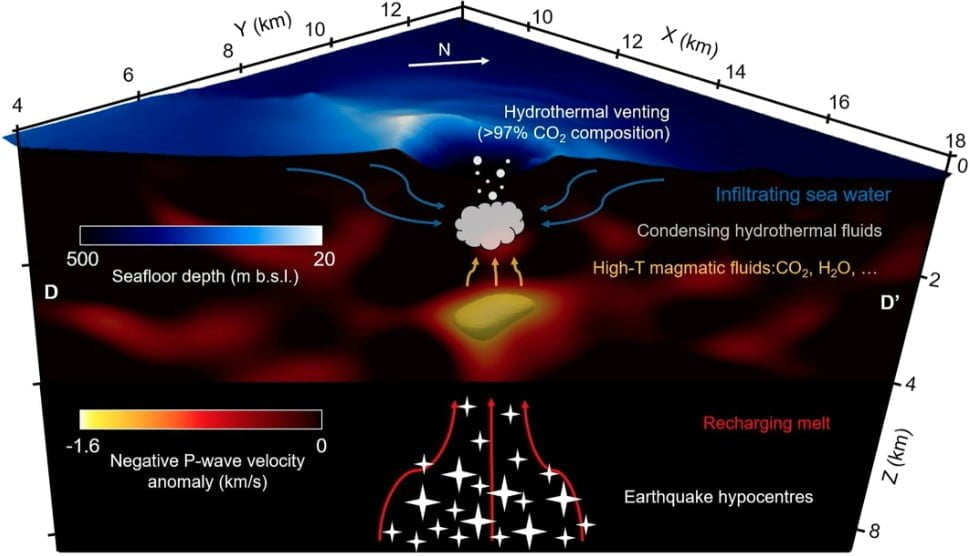Study reveals magma chamber at submarine Kolumbo volcano near Santorini, Greece poses a serious threat

A new study published in AGU’s Geochemistry, Geophysics, Geosystems has revealed the existence of a magma chamber beneath the Kolumbo volcano, located near Santorini, Greece. Using a high-resolution technology called full-waveform inversion, the study found that the magma chamber poses a serious hazard as it could produce a highly explosive, tsunamigenic eruption in the near future.
Researchers using a next-generation tomographic method with extraordinarily dense seafloor recordings of controlled marine sound sources were able to detect a body of mobile magma that has been growing at an average rate of 4 × 106 m3 per year since the last eruption in 1650 CE. This rate is large enough to counteract the effect of cooling and crystallization.
Arc volcanoes, which mark the curved boundaries between converging tectonic plates, host the most explosive events on Earth. The associated hazard depends on how much mobile magma is currently present beneath a volcano.

Standard tomographic methods used so far have relatively low resolution and give a blurred picture of only the largest molten-rock bodies. In particular, they struggle to distinguish between mobile magma and melt spread between tightly packed mineral grains.
The study also suggests that similar reservoirs may have gone undetected at other active volcanoes, challenging the existing eruption forecasts and reactive-flow models of magma differentiation.
The authors of the study suggest that Kolumbo poses a serious threat and deserves a real-time monitoring facility.
Despite the excellent data coverage, the small magma body was missed by standard tomography. This suggests that applying next-generation imaging methods to already well-studied volcanoes may lead to similar discoveries.
Given the potentially high societal impact of an explosive eruption at Kolumbo, the authors suggest establishing a permanent observatory involving continuous earthquake monitoring, to ensure that any future activity is closely monitored, and the necessary precautions can be taken to mitigate the risk to the local population.

Kolumbo is a submarine volcano located near the island of Santorini in Greece. The volcano is known for its explosive eruptions, with the most recent one occurring in 1650 CE.
It is situated on the boundary between two tectonic plates, where the African plate is subducting beneath the Aegean plate. Kolumbo is an important site for studying the dynamics of arc volcanoes, which are known for their explosive eruptions and the formation of magma chambers.
The volcano is also of interest due to its potential for generating tsunamis, which can be a significant hazard for the nearby island of Santorini and the surrounding areas.
References:
Magma Chamber Detected Beneath an Arc Volcano With Full-Waveform Inversion of Active-Source Seismic Data – AGU Geochemistry, Geophysics, Geosystems – October 2022 – https://doi.org/10.1029/2022GC010475 – OPEN ACCESS
Featured image credit: AGU/Authors

Could the huge earthquake in Turkey/Syria be related to the shifting of these two plates?
“It is situated on the boundary between two tectonic plates, where the African plate is subducting beneath the Aegean plate. Kolumbo is an important site for studying the dynamics of arc volcanoes, which are known for their explosive eruptions and the formation of magma chambers.”
Perhaps the filling of this magma chamber under Santorini is simply another manifestation?
What say you, “Watcher”?